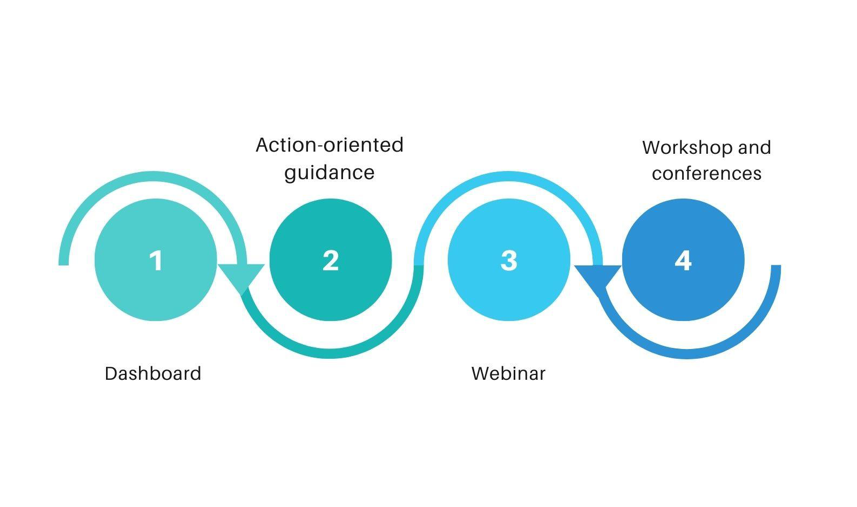Task1: Defining a conceptual framework for transport poverty

The choice of metrics used in the literature to measure transport poverty poses a serious concern for policy makers as it affects the extent and depth of proposed solutions in the built environment and policy spheres.
Existing indicators mainly focus on income and fuel spending—assessing the ability to afford one’s fuel bills.
Transport affordability may be measured considering the financial stress that it generates. Income based metrics refer to the necessary weekly amount spent on transport that leaves the household with a residual income below the official poverty line. As a consequence, income based metrics alone are likely insufficient measures of transport poverty.
Studies by Eurostat, in addition, explores the relationships between transport expenditure patterns and type of social group, occupation and employment status, gender and age. Thus, this study provides an overview of the groups of society that may be vulnerable to transport poverty.
Representing an essential service to improve the well-being of individuals, transport has a direct impact on the ability to participate fully in society by limiting people’s ability to access work, school, health care or leisure (Simcock et al, 2021).
Task2: Mapping of the national and sub-national data sources availability

In order to measure and monitor transport poverty, Task 2 of this proposal involves the identification of official data sources at the Italian national and local levels. Two different dimensions can be explored through different sources of official data : i) transport affordability and ii) transport accessibility.
Transportation affordability, which refers to the financial costs of travel relative to incomes, will be analyzed per person per month by using the HBS and household consumption expenditure.
The HBS focuses on all expenditures incurred by the resident households to purchase goods and services devoted to household consumption exclusively, continuously conducted by the Italian NSI. In our project we will use the microdata file for research purposes provided by ISTAT. The data of our interest refer to the average monthly household transportation expenditure over the total expenditure.
A section of the questionnaire is devoted to household expenses, which includes all the expenses incurred by private household members in relation to providing themselves with the essentials of living.
The data of our interest refer to:
- Use of public transport for inter-urban and extra-urban connections and level of satisfaction;
- Daily commuting. The Territorial Indicators for Development Policies Database is one of the products envisaged by the Convention signed between Istat and the Managing Authority of the NATIONAL OPERATIVE PROGRAM (PON) “Governance and Institutional Capacity 2014-2020,” regarding the implementation of the Territorial and Sectoral Statistical Information for Cohesion Policies 2014-2020 Project, with Istat, the Department for Cohesion Policies of the Presidency of the Council of Ministers and the Agency for Territorial Cohesion in the role of proposing parties. The main objectives of the database are to have up-to-date territorial data and indicators to observe the results gradually achieved by policies in the territories, support possible reprogramming of resources and promote informed public debate.
New data sources relevant for transport poverty were taken into consideration such as data collected from (public) transport providers, Google mobility reports, OpenStreetMap and General Transit Feed Specification (GTFS) data.
Task3: Suggesting a comprehensive methodological system to measure and monitor transport poverty

This proposal involves the identification of a set of statistical methodologies which could help the identification areas for improvement in terms of accessibility and affordability of transport. The intrinsic multidimensional nature of transport poverty allows us to consider both unilateral and multilateral indicators to properly consider all the dimensions connected to this phenomena.
Task 3.1: Dual cut-off identification procedure for a multidimensional transport poverty index.
Operationally, this procedure uses two kinds of thresholds. First it checks whether an individual is deprived or not in each poverty dimension by comparing the attainment of the i-th individual, that is, the value of the observed dimension for each individual, with the corresponding unidimensional cut-off; subsequently, it identifies the poor statistical units according to the number of deprivations they experience compared to a multidimensional poverty threshold. Once the multidimensional poor individuals have been identified, the results obtained can be aggregated through composite indices.
Task 3.2: The Fuzzy metric approach to understand the multidimensional nature of poverty.
In the fuzzy approach each individual has a certain propensity to poverty or deprivation.
The result is a decomposable fuzzy index of transport poverty quantifying the individual deprivation in the [0,1] interval: the higher the value the more is the sense of deprivation experienced by the individual. The idea of deprivation is the amount of persons that have better access to transport or a better affordability, as the index is formulated in terms of empirical cumulative distribution functions and the Lorenz curve, this is already intrinsic to the index. The estimation of such an index assumes that its expected value of the index is equal to the head count ratio. This ensures that the index is sufficiently free to investigate a new aspect of poverty but at the same time related to an official measure.
Task 3.3: Headline indicators
Headline indicators are based on an absolute or relative threshold used to discriminate between poor and non-poor. Firstly, we identify an outcome that can proxy for the phenomenon. Secondly, we define a threshold that can be based on an absolute value obtained from previous analysis carried out by experts, or on a relative value that is often obtained from the distribution of the outcome. Thirdly, if the outcome for a person/household is below the threshold, then the person/household is classified poor.
To measure transport poverty, we propose to use as the outcome variable the consumption expenditure for transports, surveyed on the HBS. The threshold can be obtained from the distribution of the equivalized transport expenses (a value that considers economies of scale at household level through equivalence scales). Finally, we label a household as transport-poor if its equivalized transportation expenses are below the threshold.
Similar indicators can be build using other proxies of the transport phenomenonfor example public transport and private transport.
Task4: Providing an exploratory assessment of transport poverty at local levels and for vulnerable groups



